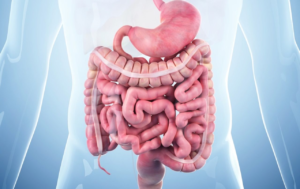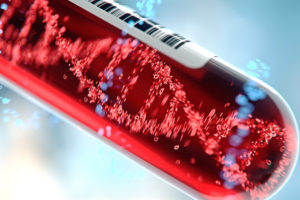Crohn’s Disease Samples
Bay Biosciences provides high quality, clinical grade bio-samples, biopsy tissue samples, FFPE tissue blocks, sera (serum), plasma and peripheral blood mononuclear cells (PBMC) biofluid specimens from patients diagnosed with Crohn’s disease. The PBMC, sera (serum) and plasma samples are processed from patient’s peripheral whole-blood using customized processing protocols.
The sera (serum), plasma and PBMC biofluid specimens are processed from Crohn’s disease patient’s peripheral whole-blood using customized collection and processing protocols. The Crohn’s disease tissue and matched biofluid samples are collected from unique patients diagnosed with Crohn’s disease. Samples and are provided to a valued pharmaceutical customer for research, diagnostics, discovery and drug development.
Detailed clinical data, Crohn’s disease patient’s history, symptoms, complete blood count (CBC), serology, MRI, biopsy tissue, histopathology information, elevated biomarker levels, genetic and metabolic information. The Crohn’s disease specimens are provided to a valued customer for research, development and drug discovery.
The Crohn’s disease sera (serum), plasma and peripheral blood mononuclear cells (PBMC) biofluids are processed from patients peripheral whole-blood using customized collection and processing. protocols.

Crohn’s Disease Overview
Crohn’s disease is one of the two most common forms of inflammatory bowel diseases (IBD). This condition causes inflammation that can occur anywhere in the digestive tract, from the lips to the anus. This is different than ulcerative colitis (UC) which only occurs in the colon. Also, Crohn’s inflammation is different from ulcerative colitis inflammation as UC only causes inflammation on the inside surface of the colon, a thin layer known as the mucosa. Whereas Crohn’s disease, on the other hand, can cause inflammation that goes through the thickness of the bowel wall. Another difference is that the areas of inflammation in Crohn’s can appear in patches throughout the intestines with patches of healthy intestines in between, whereas ulcerative colitis spreads in connected portions of the intestines. Crohn’s disease can develop in anyone, even if you have no family history of the disease. It is most commonly found in developed countries however new cases are being reported in less developed countries also. In the United States however among certain groups, including those who are of Jewish descent and Caucasians over 700,000 Americans have been diagnosed with the disease. If you do have a relative with either Crohn’s disease or ulcerative colitis, you have an increased risk of developing either of the diseases. The most common time of life for the diagnosis to occur is between the ages of 15 and 35. But there has been an increase in the number of pediatric patients, with about 10 percent of patients being diagnosed before the age of eighteen.
Signs and Symptoms of Crohn’s Disease
Common signs and symptoms of the Crohn’s disease include abdominal pain that can range from persistent cramps to sharp, localized pains. A change in bowel movements, such as diarrhea or constipation. Blood in the stool, the color of which depends upon where it is released in the intestines and ranges from bright red to black. Vomiting, nausea, lack of appetite, fever, fatigue, painful abscesses and resulting fistulas which are abnormal channels that develop between the intestine and other internal organs or the intestines and the skin and weight loss.
Crohn’s disease can also affect other areas of the body such as the eyes, the kidneys, the liver, the joints, the gall bladder and the skin through related conditions. Because of this, occurrences such as strange bumps on the skin, a reddened or itchy eyes, kidney stones, gallstones, swollen and painful joints can at times be related to Crohn’s disease. Most of the times, these conditions are present only when the Crohn’s disease is active, and less evident when the Crohn’s disease is in remission.
Causes of Crohn’s disease are unknown and there is no cure for the disease. Researchers believed in the past that stress or certain foods could cause Crohn’s disease. But new research shows that, while stress can make any condition worse, it does not cause Crohn’s disease. Certain foods such as fatty or fried foods, food containing high-fiber, carbonated beverages can make symptoms worse but have not been found to cause the Crohn’s disease. Instead, scientists believe that the condition is caused by a combination of genes, environmental factors and immune systems that react inappropriately by attacking the intestines.
Diagnosis of Crohn’s Disease
Crohn’s disease symptoms are different depending on where the disease is located along the digestive tract. For some patients the first sign will be mouth ulcers or swollen joints, for others, bloody diarrhea or unexplained fever become problematic. In pediatric patients, a lack of normal growth could also be a problem.
There are several tests that can be performed to confirm whether the condition is Crohn’s disease. Doctors may do blood tests to check for inflammatory markers in the blood or to rule out gluten intolerance. Radiology tests, such as a small bowel X-rays or a CT scans, may be performed. Sometimes patients are required to have endoscopic procedures such as swallowing a tiny camera pill or having a colonoscopy, the latter of which is usually confirmed with pathological findings from a biopsy.
In a small percentage of patients, it is difficult to tell if the inflammation is related to Crohn’s disease or ulcerative colitis. As the diseases are treated with similar drugs, this usually is not a problem. If a patient develops inflammation that burrows through the bowel wall, develops and abscess or fistula or begins having small bowel symptoms, the diagnosis usually becomes Crohn’s disease.
Treatment of Crohn’s Disease
Crohn’s disease treatment has advanced rapidly In the past two decades. In the past steroids and sulfa drugs were used for the treatment of Crohn’s disease. Now a days gastroenterologists rely on sophisticated biologic medications, which are the drugs that suppress the immune system, targeted steroids and new generations of salicylates to reduce or eliminate symptoms.
These new treatments are highly effective and have helped more patients with Crohn’s disease to go into remission and stay in remission. However, still most of the Crohn’s disease patients do require surgery, especially when medical therapies fail to control the disease, such as when scar tissue causes blockages in the intestines, when a fistula occurs or when cancer develops.

Bay Biosciences is a global leader in providing researchers with high quality, clinical grade, fully characterized human tissue samples, bio-specimens and human bio-fluids. Our sample collections include cancer (tumor) tissue, cancer sera (serum), cancer plasma, cancer PBMC and human tissue samples from most other therapeutic areas and diseases.
Bay Biosciences maintains and manages it’s own bio-repository, human tissue bank (biobank) consisting of thousands of diseased samples (specimens) and from normal healthy donors. Samples available in all formats and types. Our biobank procures and stores fully consented, deidentified and institutional review boards (IRB) approved human tissue samples and matched controls.
All our human human tissue collections, human specimens and human bio-fluids are provided with detailed samples associated patient’s clinical data. This critical patient’s clinical data includes information relating to their past and current disease, treatment history, lifestyle choices, biomarkers and genetic information. Patient’s data is extremely valuable for researchers and is used to help identify new effective treatments (drug discovery & development). We specialize in oncology and other therapeutic areas and diseases. This clinical information is critical to demonstrate their impact, monitor the safety of medicines, testing & diagnostics, and generate new knowledge about the causes of disease and illness.
Bay Biosciences banks wide variety of human tissue samples and biological samples including cryogenically preserved -80°C, fresh fresh frozen tissue samples, tumor tissue samples, FFPE’s, tissue and slides. Samples include matching human bio-fluids, whole blood and blood derived products such as serum, plasma and PBMC’s.
Bay Biosciences is a global leader in collecting and providing human tissue samples according to the researchers specified requirements and customized, tailor made collection protocols. Please contact us anytime to discuss your special research projects and customized human tissue sample requirements.
Bay Biosciences provides human tissue samples (human specimens) from diseased and normal healthy donors. Which includes peripheral whole-blood, amniotic fluid, bronchoalveolar lavage fluid (BAL), sputum, pleural effusion, cerebrospinal fluid (CSF), serum (sera), plasma, peripheral blood mononuclear cells (PBMC’s). In addition we can provide saliva, Buffy coat, urine, stool samples, aqueous humor, vitreous humor, kidney stones, renal calculi, nephrolithiasis, urolithiasis and other bodily fluids from most diseases including cancer. We can also procure most human bio-specimens and can do special collections and requests of human samples that are difficult to find. All our human tissue samples are procured through IRB approved clinical protocols and procedures.
In addition to the standard processing protocols Bay Biosciences can also provide human plasma, serum, PBMC bio-fluid samples using custom processing protocols. Donor specific sample collections in higher volumes and specified sample aliquoting can also be ordered. Bay Biosciences also provides human samples from normal healthy donors, volunteers, for controls and clinical research, contact us Now.
日本のお客様は、ベイバイオサイエンスジャパンBay Biosciences Japanまたはhttp://baybiosciences-jp.com/contact/までご連絡ください。


